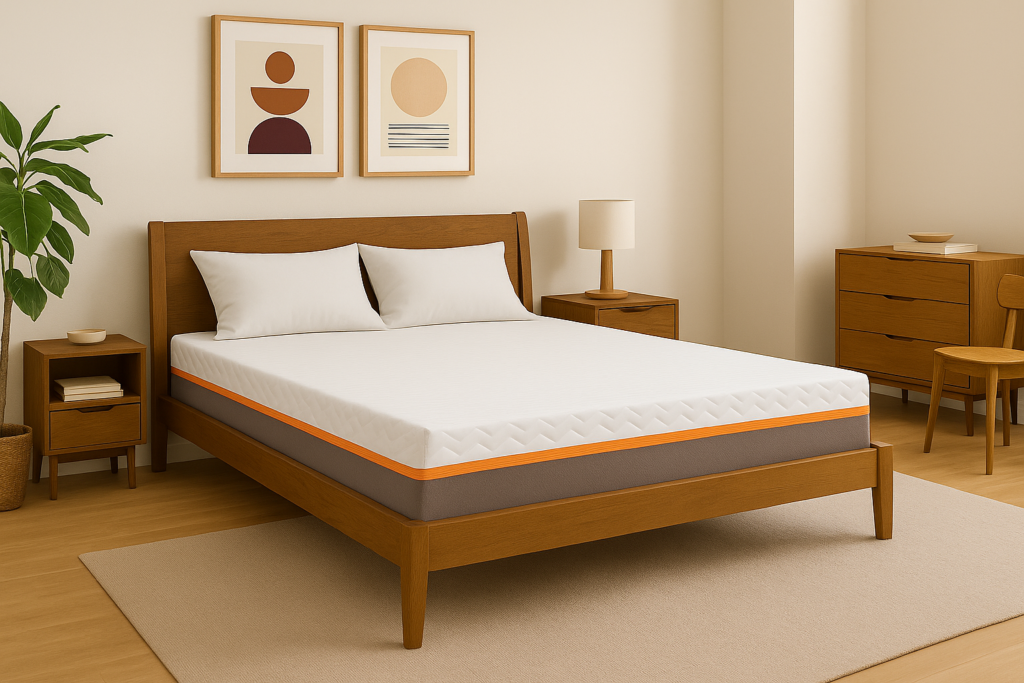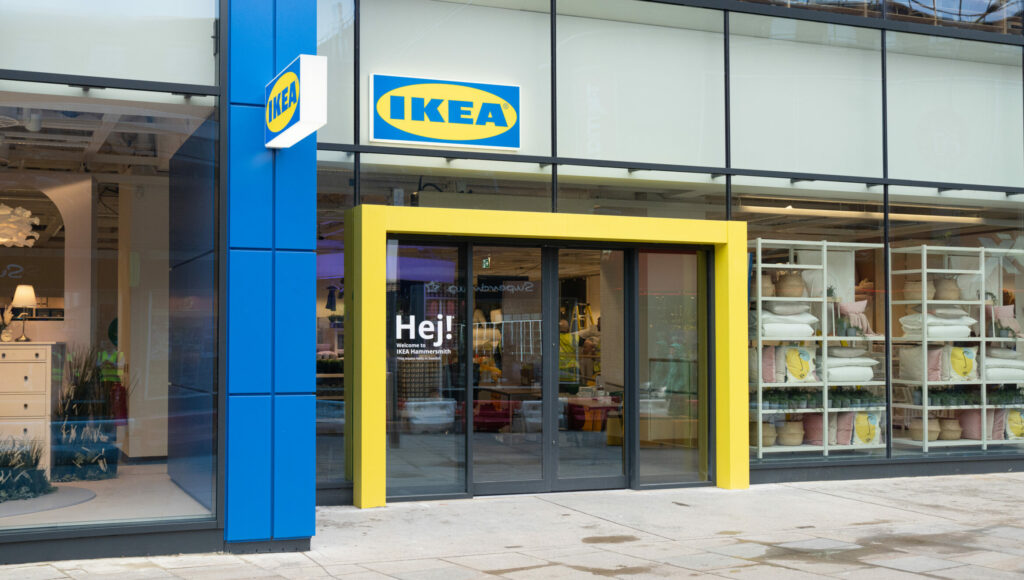Natalia Samodina, Client Legal Director at the law firm The Legal Director, explores key current threats to the furniture sector and how best to minimise them.

British furniture manufacturers are facing intense financial pressure, driven by rising input costs, shifting trade conditions, and fragile consumer confidence.
According to the Make UK Executive Survey 2025, 92% of manufacturers expect employment costs to erode margins, while volatile energy prices undermine forecasting. For furniture businesses, these strains are compounded by inflation affecting prices of timber, foam, and steel, alongside continued global supply chain disruption. The financial toll is steep.
Between April 2024 and March 2025, manufacturing accounted for 1,997 insolvencies, which equates to around 8% of all cases. Within furnishing alone, 36 businesses collapsed in 2024, leaving a combined creditor shortfall of nearly £389 million.
High-profile failures like Carpetright Ltd and Joseph Furniture Ltd have resulted in widespread losses for suppliers, landlords, and tech providers. As pressures mount, manufacturers are contending with multiple budgetary threats which all demand swift, strategic responses.
1. GEOPOLITICAL VOLATILITY AND ENERGY COSTS
The cost of electricity remains one of the most volatile and burdensome inputs for manufacturers and physical traders.
The UK’s energy prices are highly vulnerable to global fluctuations due to a multitude of factors, including its reliance on internationally traded imported gas, the dependence of the price of electricity on the price of gas, having limited interconnectors with Europe and sensitivity to geopolitical events.
The escalating conflict in the Middle East saw the international oil prices spike up around 10% in the first 48 hours. For the time being, the market seems to have priced in a risk premium but is holding its breath.
However, if tensions escalate and supply routes are disrupted, notably through the Strait of Hormuz, we could see a renewed surge in prices – according to analysts of Deutsche Bank and JP Morgan – up to $120-130 per barrel.
For British furniture makers, especially those who use such energy-intensive processes as kiln drying, metal fabrication and foam production, this volatility translates directly into higher operating costs and reduced pricing flexibility.
2. LABOUR COSTS: MINIMUM WAGE AND NATIONAL INSURANCE INCREASES
The 2025 minimum wage rise (to £12.21per hour for over 21-year-olds), as well as employer National Insurance Contributions (NICs) increases from 13.8% to 15% with a base threshold lowered from £9,000 to £5,000 are hitting manufacturers hard: a March 2025 survey by MyWorkWear found that 49% of firms fear they may not survive the next five years due to rising employment costs.
An added indirect impact is coming in the form of the Employment Rights Bill 2024 (currently in front of the Parliament) which is expected to restrict zero hours contracts and grant “day one” redundancy and dismissal rights which are currently subject to a two-year service period.
3. INTEREST RATES AND THE COST OF FINANCE
The Bank of England’s base rate was confirmed at 4.25% following its review on 19 June. With inflation still hovering above 3.4% and geopolitical risks mounting, the rate remains a key driver of persistently high borrowing costs.
4. EXTENDED PRODUCER RESPONSIBILITY AND RECYCLING FEES
The new UK’s Packaging Extended Producer Responsibility regulations (pERP), effective from January 2025, require qualifying businesses to pay for the full lifecycle cost of packaging waste.
Under pERP, furniture manufacturers that import, produce or sell packaged goods must now register, report their packaging data, and pay fees based on volume and recyclability.
While the first payments are due in October 2025 based on 2024 data, many businesses should start provisioning for these costs going forward. Non-compliant businesses would risk fines or even prohibitions on sales, making this a non-negotiable cost centre.
THE IMPACT
While many are already passing these costs onto customers, others have halted recruitment, were forced into making redundancies, scaled back or frozen expansion plans altogether.
In a bid to control energy and heating costs, several businesses have adopted four-day workweeks with longer shifts.
A surge in geopolitical instability and the climbing energy costs have a knock-on effect on the whole chain, starting from shipping and transportation costs to the costs of materials.
In this environment, available working capital remains a key pinch point for furniture makers, whether seeking to invest in machinery, finance inventory, or simply maintain liquidity. Many resort to traditional bank loans, often with “relationship banks”. But those come with high debt service repayments, extensive paperwork, restrictive covenants and often security – which can cumulatively be rather burdensome on the operations.
THE OTHER HALF OF THE PROFITABILITY EQUATION
As if the increased cost base wasn’t bad enough, sluggish sales have added to the pressure from the other end.
UK furniture sales are set to decline by 2.8% in 2025, as high mortgage costs, a sluggish housing market, and waning consumer confidence weigh heavily on demand. Behind the headline figures, inflation disguises steeper falls in sales volumes, while job insecurity and stagnant wages further curb discretionary spending.
Those consumers who are actively looking to buy are adapting. At the lower price point, cost-conscious shoppers are flocking to second-hand platforms like Ikea’s Circular Hub, Facebook Marketplace, and eBay. Pre-loved, well-built solid furniture, once seen as niche, is now flying off digital shelves.
For manufacturers, this means longer sales cycles, higher marketing costs, and increased reliance on promotions or financing schemes to achieve the acceptable conversion rate.
WIDEN THE GAP
Circularity has been on the rise for a number of years, and the driver has been predominantly ESG and wider ethics. Now there is an extra pressing reason – and that is minimising the cost of production.
Diversifying away from virgin materials and utilising reclaimed timber, recycled steel and metals can help take price volatility out of the equation. Going one step further would include offering consumers upholstery and repair service.
And the regulatory advantage? Designing for recyclability and reducing packaging can significantly lower pEPR fees, while take-back systems offer a structured approach to managing waste obligations.
Amid rising costs and evolving consumer expectations, legal guidance can offer stability and strategic clarity, anchoring creative decisions in sound commercial footing. While each furniture business faces unique pressures, tailored legal input can help to:
- manage volatility through energy hedging, balanced terms of sale, flexible creative working capital solutions that do not hinder commercial operations, and customer finance options that support growth;
- strengthen supply chain agreements with pricing mechanisms, retention of title clauses, and circularity-focused return terms that absorb shocks without breaching contracts;
- prepare for resale and refurbishment activities within regulatory and liability boundaries;
- navigate packaging Extended Producer Responsibility (pEPR) rules, optimise reporting, and improve recyclability through material choices; and
- align employment contracts and policies with sustainable workforce models, such as four-day weeks or automation-driven restructuring.
This article does not constitute legal advice. For a conversation about a plan of action that is unique to your business, call Natalia Samodina on 07747131233 or email at natalia.samodina@thelegaldirector.co.uk.














